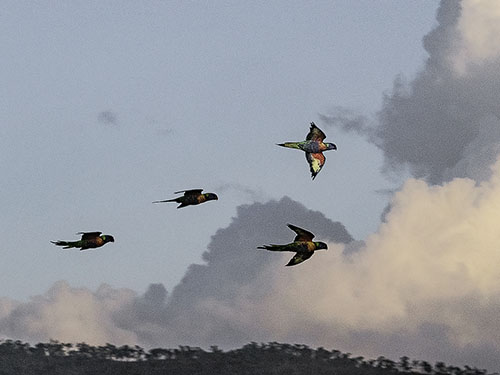Is there such activity as ‘TROPICAL ART PRACTICES”? This article makes a case that if there is a unique feature to the art practice that makes it distinct, it might reside in what loosely might be the ‘lifestyle tropical.’ However, it’s a vague claim, but with analysis, a couple of conclusions are argued. Its how the artist might interact their practice with the wet and dry climatic conditions. It might be something to do with a conscious qualitative sense of place.
Accumulations: dry tropical and wet tropical
Methodology for tropical accumulations
Tropical art practices include:
- duration art is exposed to the particular locale.
- exposure to fungi, ants, bugs, bird scat, rain, sun, spider webs.
- inorganic as in common earth elements.
- Cracking of paint.
- warping of the frame
- Expansion of paint and contraction
Between the wet and dry tropics.
This involves an authentic interaction through relocation. So the properties of a region takes on the properties of another region.
How this plays out on object art.
A non-human intentional state might be a green ant removing bits of the artwork for their purpose. The spider in need of a support. This might be a syncretic emergent form. Its a from of binary intentional agency. The human as a conceptual schema agent, the non human as a meta conceptual agent.
Site, processes and philosophy
Natural exposure for tropical art practices.
The site is the Cassowary coast, Hull river national park region. Artworks are left exposed to the natural elements as an outdoor art practice. It could be a day or for a number of month. A partial cover is placed through the tropical monsoon season. The short film gaze on nature gives an indication of this process.
Philosophical issues
The art of the rational intuition is an attempt to capture both the structural as well as anarchic elements of human intentional agency. The intentional upon the material artwork has a rational sense. This is so of the arts in general. However substance based form requires a methodological modernist consumeristic approach. The use of paraphanalia blends the rational ability to select based on normative considerations. Intuition uses a sense of purpose and reference of interpretation. Its a vague intentional act. The futile attempt to give voice to a obscure ostensible referent being the artwork.
Mixed media tropical art practices
Substance verses property based media.
Mixed media substance dualism is derived from philosophical mind/body dualism. This is a proxy for placing radically distinct substance together. Another sense of the association is that consciousness inhabits the media, or fragments of the artists intentional states. Though for the philosophical materialist the substance based mixed media might composed of combinations of media that defy normative notions of art.
Art practices with normative properties
A simple normative property based mixed media would be the traditional canvas with oil paint that is not normally considered mixed media. Another might be a photographic print on distinct paper types.
Tropical art practices with substance logics
A substance based approach to mixed media could be embedding a fine art print into fibreglass. Then by covering it with a resin the object photo is a unified interactive substance. This concept is akin to mind/body dualism of the Cartesian variety. However the mind body problem posses the logical fallacy. This is because non physical substance cannot logically interact with physical substances. The implication for mixed media methodology is that the substances may not interact and so fall apart. This cutting edge level of experiment is therefore contingent on supervening factors.
Syncretic gnostic emergent art.
Tropical art practices and syncretism
The essential shift in consciousness is one I noticed in the `1970’s at Mission beach while on a fruit orchard property. Jack Hare and his wife lived on the property at Bingal Bay. He lived what I now consider the idyllic tropical lifestyle. That is, his English ways had transformed in ways of syncretic naturalism. His skin was tawny and brown. Even in summer, he would swim in the ocean each day despite the danger of marine stingers. It was as if the tropics were reflected in the lived experience through form and action.
A Tropical Sublime Gnostic
Firstly there is some notion of a Tropical living experience. It is about tangible interconnecting lifestyles. People exist in distinct geopolitical tropical zones. This sense of an interpersonal phenomenology of being in a tropical zone becomes sublime since it transcends normative accounts of beauty. At the core, it is a sublime that straddles the tropical humidity and heat that transcend the modernist determinants of culture. This gnostic sense of what it is like to be a form of life possibly gives to a tropical art practice style. Its authenticity over the representational modes or learned methodology.
Emergent conceptualism, intuitional logics.
Probably best to begin with what is meant by intuitional logic. Formal logics deal with deductive and inductive logic. So of the superficial form: All men are mortal. Socrates is a man. Therefore Socrates is mortal. Intuitional logic would not disagree with this logic. However, the conclusion, according to intuition, may come to be Socrates is immortal. The premises true but with an absurd conclusion. However, absurdity may indicate a genuine philosophical problem.
Expressionistic tropical experimentation
This may be a non-rational logic and so non-scientific or mathematical in structure. Nevertheless, it is a sense of primordialism based on deep humanism. The absurd that forms the basis for the emergent conceptualism of going tropical is the sense of impulsive rationalism. The concept ’emergent’ fails to gain traction in the world of functionalism—however, it is the basis for forms of expressionistic experimentation that lead to vistas of possibilities.
